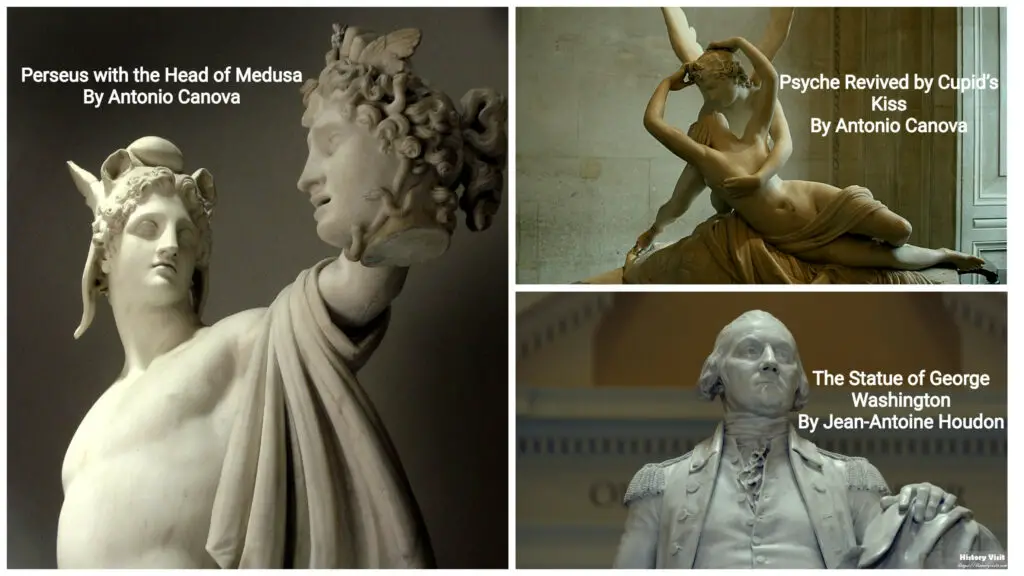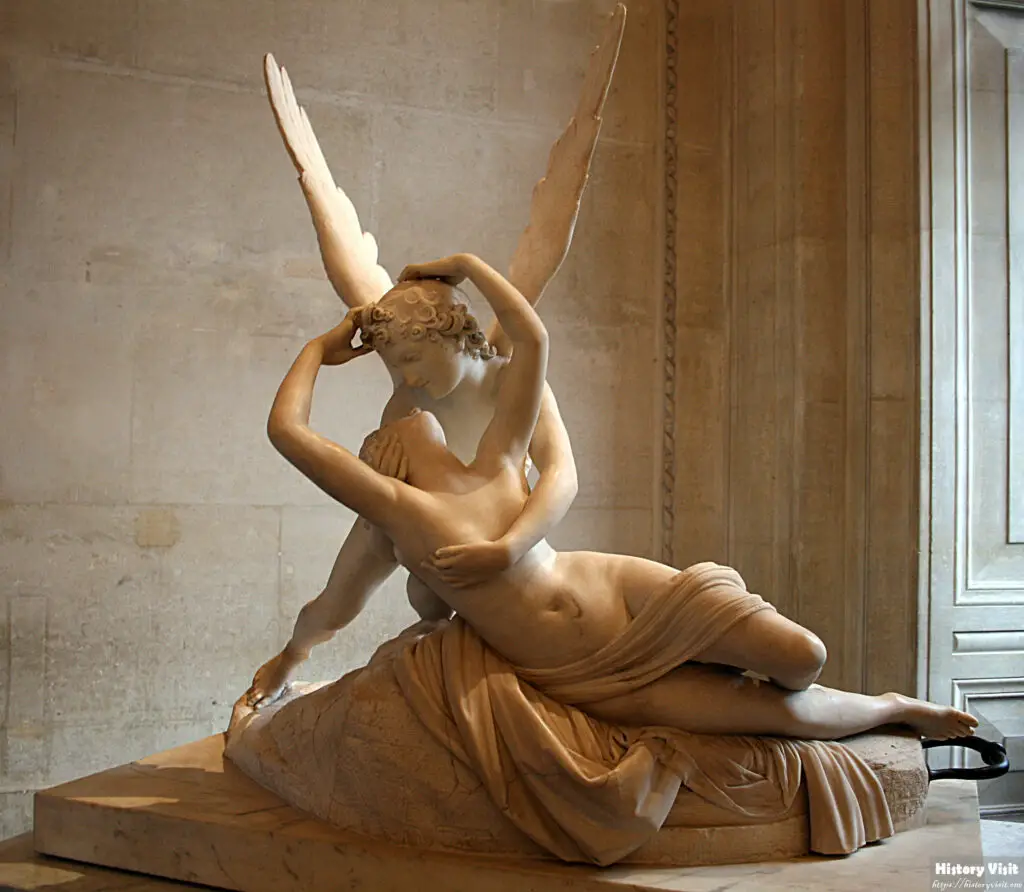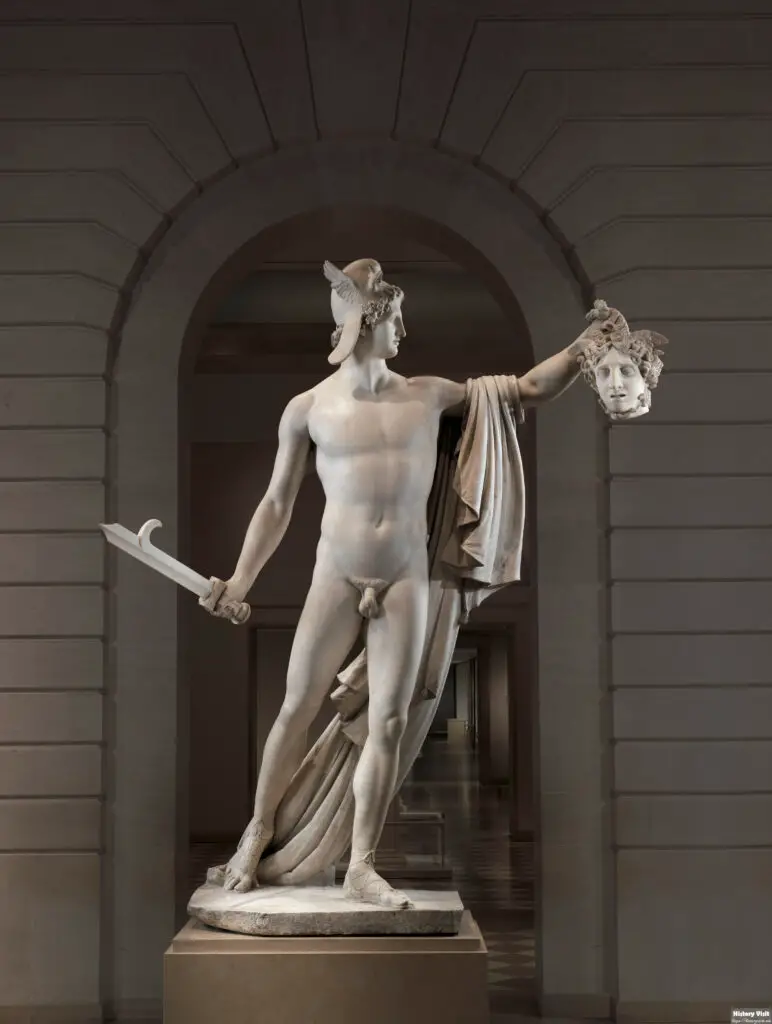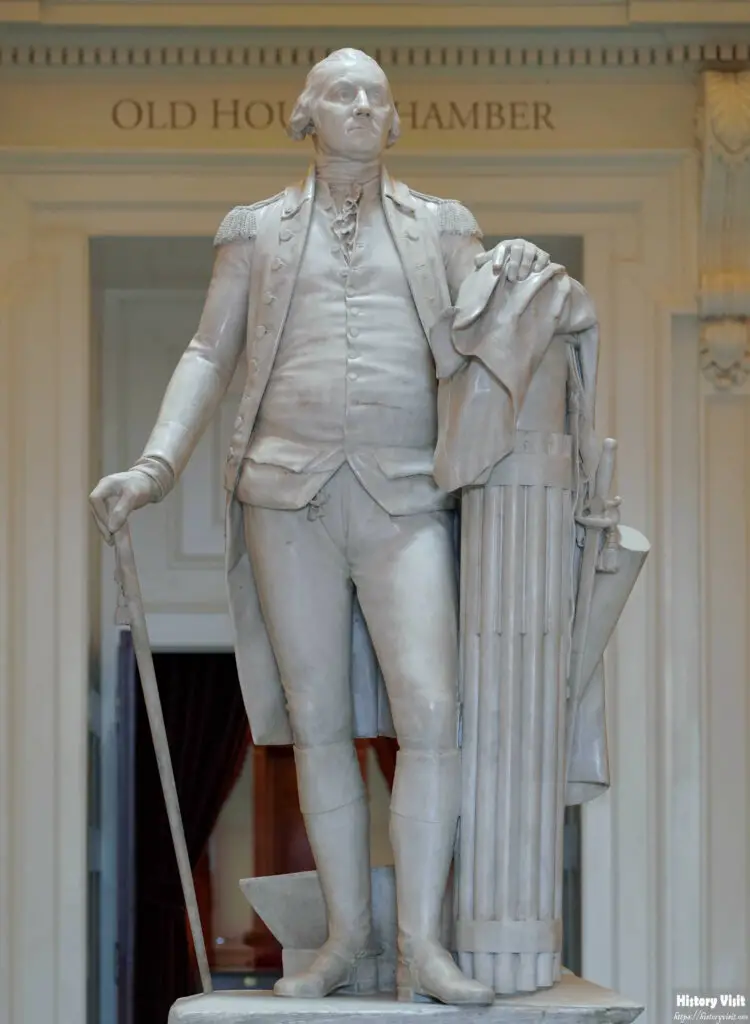Neoclassical Art Masterpieces: Sculpting Emotion in Marble

Introduction
Neoclassical art reshaped sculpture in the 18th and 19th centuries. It brought balance, clarity, and ideal forms. These values shaped Europe’s artistic revival. Neoclassical art focused on calm beauty and classical myths.
This article explores three iconic sculptures. Each reveals a unique vision of beauty and virtue. They reflect the ideals of neoclassical art and its timeless message.
The selected works span different years. From 1785 to 1806, artists transformed stone into legend. Through these sculptures, neoclassical art touched myth, love, and national pride.
Psyche Revived by Cupid’s Kiss (1787–1793)

Antonio Canova carved this masterpiece from marble. It shows Psyche waking to Cupid’s gentle kiss. The sculpture captures a divine moment of love.
This work blends passion with elegance. Psyche leans back, her arms rising to Cupid’s shoulders. Cupid supports her tenderly. Their embrace forms a flowing line.
The composition invites movement. Canova used curves and diagonals. These guide the eye gently across the scene. Every detail feels alive.
This sculpture helped define neoclassical art. It shows balance and emotional restraint. The figures are idealized but human. The love story speaks beyond its myth.
Neoclassical Art and the Power of Love
Psyche and Cupid’s story symbolizes soul and desire. Neoclassical art favored such allegories. This tale fits its values of virtue and harmony.
The figures reflect Greek beauty. They are youthful, soft, and serene. Yet, there is motion in their pose. It balances passion with purity.
Canova avoided drama. Instead, he aimed for peace. Even the kiss is silent. The viewer feels the tenderness.
Light touches the marble softly. It adds depth to the smooth bodies. This style made Canova’s work famous.
Perseus with the Head of Medusa (1804–1806)

Canova created Perseus soon after the Psyche sculpture. It shows the Greek hero holding Medusa’s severed head. He stands proud and composed.
This work channels heroic idealism. Perseus is not wild. He is calm and focused. His muscles are perfect.
He raises Medusa’s head like a trophy. But his face shows thought, not pride. Neoclassical art often portrayed emotion through poise.
The sculpture echoes classical statues. It resembles the Apollo Belvedere. The symmetry and smooth surface show Canova’s admiration for Greek art.
Neoclassical Art and Heroic Form
This piece celebrates moral strength. Perseus represents bravery and wisdom. He faces danger with calm strength.
Neoclassical art promoted civic virtue. Perseus becomes a role model. He overcomes evil without cruelty.
The lines of his body are precise. Nothing is accidental. Every muscle follows classical ideals.
The contrast between Perseus and Medusa is striking. She is chaos. He is order. This duality is central to neoclassical thought.
The Statue of George Washington (1785)

Jean-Antoine Houdon made this sculpture in France. It was shipped to the U.S. in 1796. It stands in the Virginia State Capitol.
Houdon met Washington in person. He studied his face and body. This made the statue lifelike.
Yet, it is not just a portrait. Washington wears Roman dress. He holds a plow and sword.
This blend reflects neoclassical art. It joins classical heroism with modern leadership. Washington becomes a Roman-style citizen-soldier.
Neoclassical Art in the New World
This statue mixes European art with American ideals. It shows how neoclassical art crossed borders.
Washington does not pose like a king. He looks humble and steady. His power comes from virtue.
The plow shows peace. The sword shows readiness. Together, they tell a political message.
Neoclassical art favored these symbols. They taught values. They honored democracy, wisdom, and civic duty.
The Spread of Neoclassical Art
These three works influenced generations. They showed how art could shape values. They also inspired public taste.
Museums displayed such sculptures proudly. Schools taught their techniques. Artists copied their forms.
Neoclassical art became a shared language. It united cultures through beauty and balance.
The style endured into the 19th century. Even today, its influence remains.
Timeless Techniques in Marble
Canova and Houdon used pure white marble. They avoided color. Form alone told the story.
Their tools included chisels, rasps, and patience. Each curve took time. Each fold had purpose.
Their surfaces feel soft. Yet, they are stone. This illusion is key to neoclassical beauty.
Craftsmanship mattered deeply. Neoclassical art held technique and vision in equal weight.
Themes of Emotion and Reason
Each sculpture blends emotion with calm. Psyche shows love. Perseus shows courage. Washington shows wisdom.
But none show wild feeling. Instead, they express balance. This was the neoclassical goal.
Feelings were real but restrained. Beauty had rules. Stories carried ideals.
This mix of passion and order defines the period. It gives neoclassical art its voice.
Symbolism in Neoclassical Sculptures
Objects matter in these works. Cupid’s wings, Medusa’s head, Washington’s sword. Each adds meaning.
Even posture speaks. Psyche lifts her arms. Perseus stands tall. Washington rests but stays alert.
Every line supports the idea. The sculptures teach as well as please.
Neoclassical art aimed to elevate minds. These symbols were part of that aim.
Public Reception and Legacy
People admired these sculptures. They felt moved and uplifted. They saw greatness in stone.
Nations adopted neoclassical styles. Public buildings used its forms. Monuments followed its models.
Art became civic. It served society. That was neoclassical art’s great mission.
Its legacy still shapes modern design and taste.
Conclusion
Neoclassical art changed sculpture forever. It returned to ancient values. But it spoke to modern hopes.
These three works show its range. From myth to history. From Europe to America.
Their beauty still stirs the heart. Their balance still teaches the eye. Neoclassical art remains timeless.


